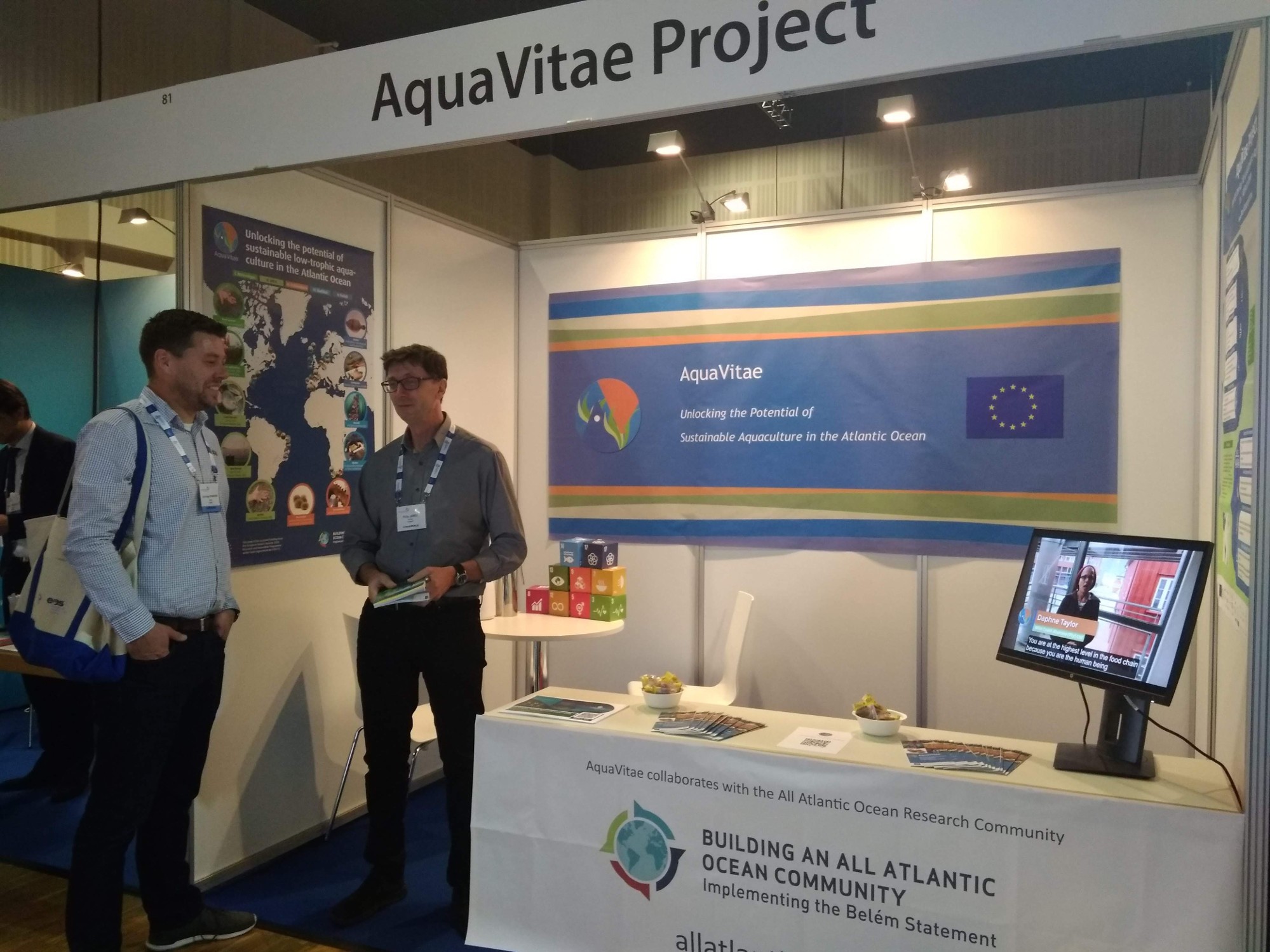Low trophic aquaculture project participates in Aquaculture Europe
AquaVitae aims to introduce new low trophic species, products and processes in marine aquaculture value chains across the Atlantic. The five chosen value chains include macroalgae, Integrated Multi-Trophic Aquaculture (IMTA), echinoderm species (e.g. sea urchins), shellfish and finfish. EU EATIP Day: Low impact – High output The EU EATIP Day (9th October) was focused on new aquaculture value chains, especially those that include species from the lowest levels of the food chain. Philip James, project coordinator, presented AquaVitae's ambitions and expected outcomes in the session, joining representatives of the European Commission, EATIP and sectoral stakeholders. "The EATip session focussing on the importance of low trophic species is a tremendous opportunity to show case AquaVitae and its possible contribution to low trophic aquaculture value chains in the Atlantic," said project coordinator Philip James. Eleven studies in the Atlantic basin The timing of Aquaculture Europe matches the kick-off of most of the project's case studies. Eight representatives participated in Aquaculture Europe, and were available to talk about the environments, processes and species in their case studies. 1. Sea urchin roe enhancement, Philip James (NOFIMA, NO) 2. Offshore cultivation of macroalgae, Urd Grandorf Bak (Ocean Rainforest, FO) 3. Land based IMTA, Gercende Courtois de Viçose (Univ. Las Palmas de Gran Canaria, ES) 4. Biofloc and pond-based IMTA, Felipe Vieira (Univ. Fed. Santa Catarina, BR) 5. Sea cucumber for IMTA application, Matthew Slater (AWI, DE) 6. Native and under-utilised oyster species in Brazil and Scandinavia, Colin Hannon (GMIT, IE) 7. Freshwater aquaculture of piracuru and tambaqui, Lucas S. Torati (EmBraPa, BR) 8. Marine aquaculture of Brazilian flounder, Luis Sampaio (Univ. Federal do Rio Grande, BR) 9. Low trophic feeds for aquaculture, Sofia Engrola (CCMAR, PT) The case study leaders had just started developing prototypes of the species that they want to produce, or the processes and/or production methods that they were studying at the time of the event. These will then be evaluated and assessed for environmental impact, socio-economic benefits and consumer safety and preference. Cross-cutting activities Some of the cross-cutting activities involve research into biosensors, Internet of Things (IoT), product characteristics, market potential, environmental monitoring, as well as analyses of value chains, and policy frameworks. Photos: https://www.flickr.com/gp/181684915@N06/30ihZ4



